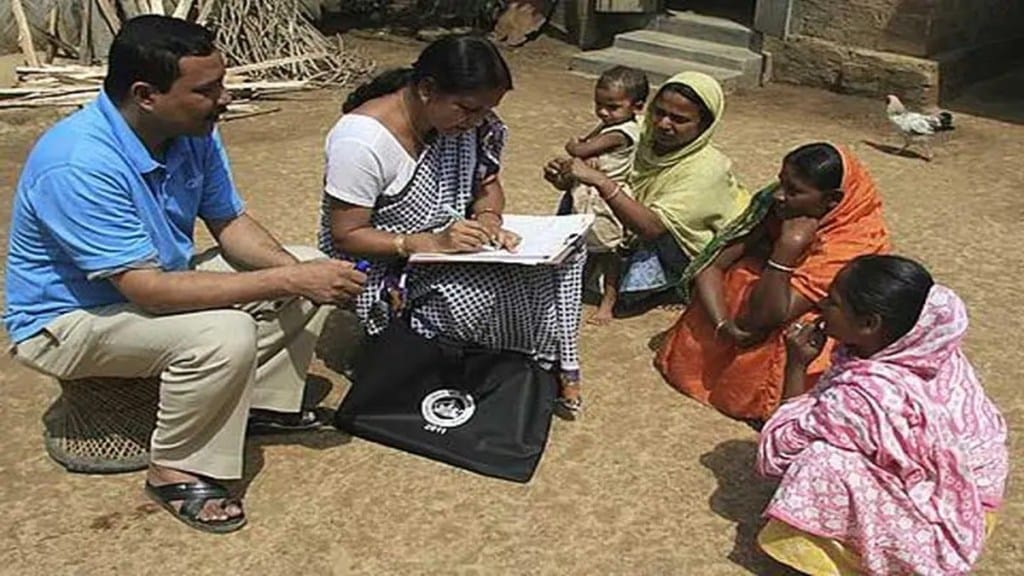By Badri Narayan
Indian society has multiple diversities — ecological, cultural, social, and political. These diversities need to be transformed so that they are our strengths, not weaknesses. When political forces lose their deep and lively connection with the people, they sometimes indulge in politics based on societal fault lines. In such a situation, any political party in power needs to deal with the fault lines delicately and cautiously, as they often tend to emerge due to misinterpretation of the diversity inherent in Indian society. Prime Minister Narendra Modi, in many of his speeches, has emphasised that diversity is a strength for India, not weakness. During his tenure of over 10 years, he has creatively and sensitively attempted to convert these diversities as resources for Viksit Bharat (developed India).
Caste in central to Indian society and politics. It creates homogeneity as well as diversity, integration as well as difference, and unity as well as fragmentation. In the past few years, Rahul Gandhi’s Indian National Congress (INC) has been constantly trying to use caste fault lines for political mobilisation by campaigning for a caste census. This move has propagated various rumours, false assumptions, and social doubts. Sometimes, such social conditions may disrupt peace. In the absence of a caste-based national census, a few regional parties and INC-led states began conducting their own caste-based surveys. The data collected from some of the surveys also led to debates on their aptness and authenticity. The Bharatiya Janata Party (BJP) government announced the caste-based enumeration for the upcoming national census against this backdrop.
This announcement was questioned by the media, experts, and political activists alike. The first question asked was regarding the sudden volte-face of the BJP. It has been argued that the BJP doesn’t believe in caste identities in its political vision, so such a decision is unprecedented. However, if one looks at the history of democratic politics, it can be understood that this is not a sudden decision. It evolved with the formation of the party. Political archives show us that BJP leaders Gopinath Munde (in 2009) and Sushma Swaraj (2010) have raised the demand for a caste census. Erstwhile Union home minister Rajnath Singh (2018) and present incumbent Amit Shah (2023) also promised the caste census in various forums. So, it is obvious that the BJP’s decision is not influenced by the opposition’s pressure alone.
In democratic politics, any shift in a political stance occurs not because of the leaders’ decisions. It evolves in the long term as the political base of a party changes. It reflects the aspirations of the party’s community and its class composition. Notably, in the past three decades the BJP’s political base has extended from the upper caste and urban middle class to other backward castes, scheduled castes, and scheduled tribes. This shift was reflected in the emergence of a large number of leaders from backward and marginal social groups at all levels — from panchayats to the Cabinet led by PM Modi. Modi, as Sangh pracharak (organiser) and during his tenure as the chief minister of Gujarat, cultivated a new form of social justice through his socio-cultural ideology and political actions. It was not Ram Manohar Lohia’s version of social justice, but rather a new idea that combined the visions of BR Ambedkar, Swami Vivekananda, Sangh-produced social samrasta (harmony), and his own experiences. In contrast with Lohia’s version of social justice, which centrally supports caste-based social justice, Modi thought of multi-pronged strategies to provide the masses an ability to aspire for and acquire developmental mobility. It also enabled participation of the marginalised sections of society in politics, religion, socio-cultural spheres, and development. This model also included caste-based reservation as one measure for their empowerment. He expanded this model when he became PM in 2014.
Recently, in an interview, Union education minister Dharmendra Pradhan termed this model of social justice as the holistic social justice model which works for the empowerment for Dalits, marginalised classes, backward communities, women, the poor, transgender individuals, as well as many other sections. In the interview, he explained how through beneficiary policies, socio-religious dignity, political participation, and development and power, the BJP has tried to build an equal society by dispensing horizontal and holistic social justice in contrast to vertical, fragmented, and linear social justice pursued by the INC and other political groups. According to him, this model may bring samajik samrasata (social harmony), not fragmentation.
The question from the opposition now pertains to the way in which the BJP plans to handle the social fragmentation that could occur due to a caste census, and how the possible identity contestations might be converted into samajik samrasata. In fact, a caste census of this magnitude may increase the assertions of those in a majority as well as result in aspirations among the minorities. So, the numbers reflected in the census may well inspire aspirations among fringe groups, which in turn could provide them structural mobility. This could also help in creating an equal society. Giving space to caste in development and policy discourses may be metaphorically understood as unravelling threads of a tightly woven carpet to weave it anew — with decreased surface tension and a more beautiful result. It is nothing less than deconstructing current structures to engineer a better social ecosystem.
In sum, if the caste data provides us deeper societal information and insights, it may help to provide structural mobility to the marginal groups, creating an equal society which is paramount for a Viksit Bharat. However, we must deal with this data ethically to ensure positivity, balance, and aspirations for citizens. It remains to be seen how PM Modi will diffuse the several caste-based assertive voices — that may arise due to this census — into the ocean that is the collective Indian identity.
The writer is director, GB Pant Social Science Institute, Allahabad.
Disclaimer: Views expressed are personal and do not reflect the official position or policy of FinancialExpress.com. Reproducing this content without permission is prohibited.

